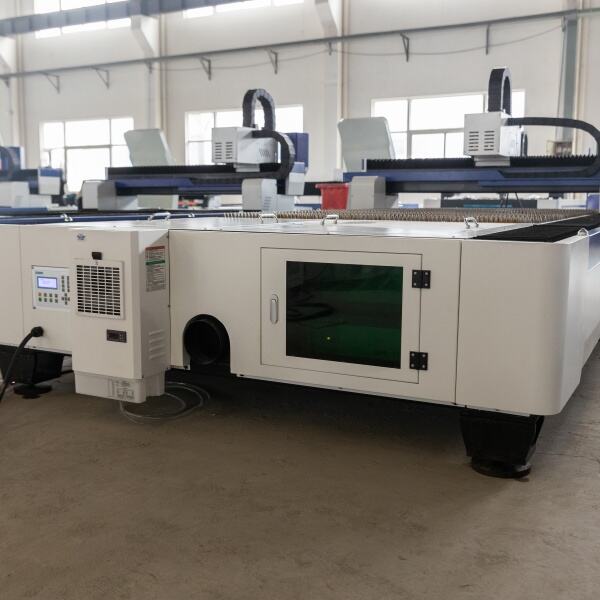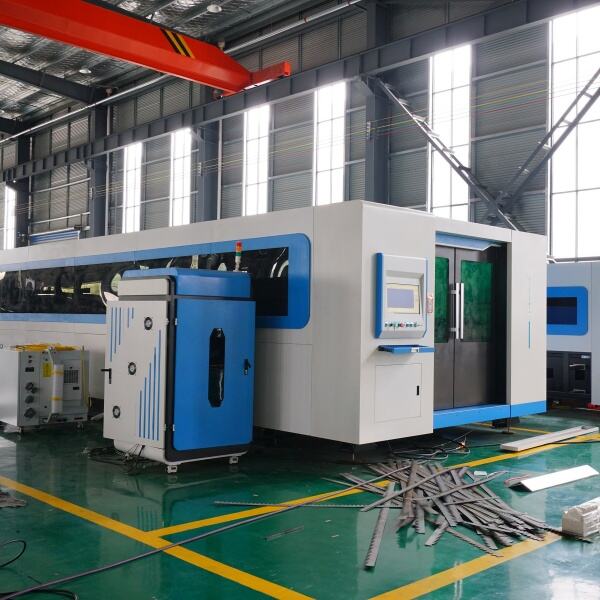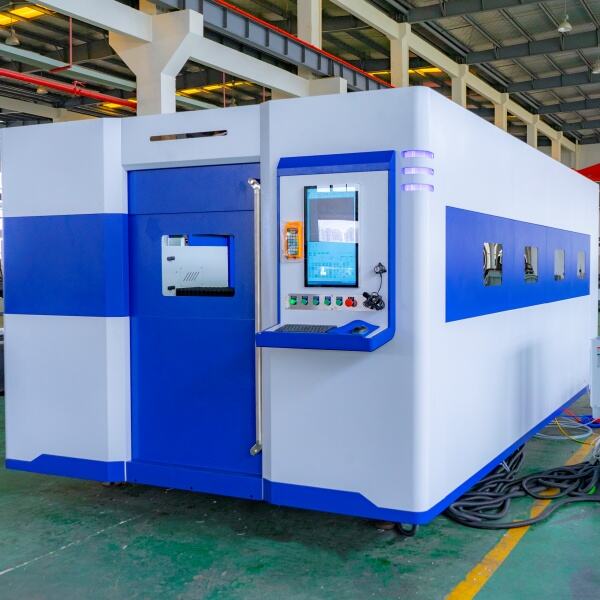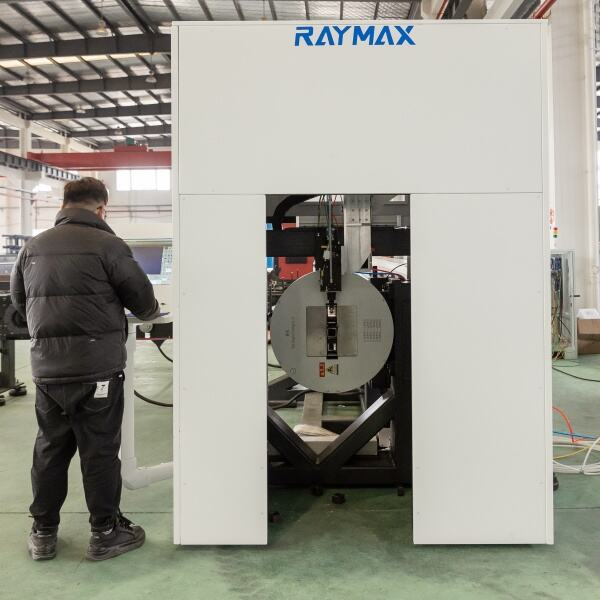
O mașină de tăiat cu laser pe fibră funcționează prin convertirea energiei electrice într-un fascicul laser de înaltă intensitate, care este apoi focalizat pentru a topi, vaporiza sau îndepărta materialul metalic, oferind tăieturi precise și curate. La RAYMAX, mașinile noastre de tăiat cu laser pe fibră sunt construite cu componente avansate și controale intuitive pentru a optimiza acest proces, fiind potrivite pentru industria auto, aviție, construcții navale și energetică. Mai jos este o analiză detaliată a principiului de funcționare, adaptată designului mașinii noastre și aplicațiilor reale. Pasul 1: Generarea Laserului Procesul începe cu sursa laser – un component esențial al mașinilor noastre, obținut de obicei de la producători consacrați precum IPG. În interiorul sursei laser, diodele emit lumină la o anumită lungime de undă (1064 nm, ideală pentru tăierea metalelor) într-un cablu de fibră optică. Cablul de fibră optică amplifică lumina utilizând elemente rare (de exemplu, iterbiu), creând un fascicul laser de mare putere (între 1000 W și 6000 W la modelele noastre). De exemplu, mașina noastră de 3000 W generează un fascicul cu suficientă energie pentru a tăia oțel carbon de 12 mm grosime – utilizat la componentele sasiului auto – în timp ce modelul nostru de 6000 W produce un fascicul pentru plăci de oțel de 20 mm în construcții navale. Pasul 2: Transmiterea și Focalizarea Fasciculului Fasciculul laser amplificat se deplasează printr-o serie de oglinzi și o cap de tăiere – un component precis care focalizează fasciculul într-un punct minuscul (chiar și de 0,1 mm diametru). Capetele noastre de tăiere folosesc lentile de înaltă calitate (fabricate din seleniură de zinc) pentru a se asigura că fasciculul rămâne focalizat chiar și la viteze mari de tăiere. Capul de tăiere este montat pe un sistem de poartă acționat servo, care se mișcă de-a lungul axelor X, Y și Z cu o precizie de ±0,03 mm – esențial pentru clienții din aviție care taie piese complexe din aliaje de aluminiu (de exemplu, suporturi pentru aripi de avion) cu toleranțe strânse. Pasul 3: Interacțiunea cu Materialul și Tăierea Atunci când fasciculul laser focalizat lovește tabla metalică (de exemplu, oțel carbon, oțel inoxidabil, aluminiu), aceasta este încălzită rapid până la punctul de topire sau vaporizare (până la 3000°C pentru oțel). Pentru a îndepărta materialul topit și a crea o tăietură curată, mașinile noastre folosesc gaz auxiliar – aer comprimat, oxigen sau azot – livrat printr-un mic orificiu din capul de tăiere. Alegerea gazului depinde de material: - Oxigen: Utilizat pentru tăierea oțelului carbon (mai gros de 6 mm). Reacționează cu oțelul, generând căldură suplimentară, accelerând procesul de tăiere și lăsând o margine ușor oxidată (acceptabilă pentru piese de sasiu auto). - Azot: Utilizat pentru oțel inoxidabil și aluminiu (componente pentru aviție sau industria alimentară). Răcește materialul și previne oxidarea, lăsând o margine netedă, fără bavuri, care nu necesită finisare secundară. - Aer comprimat: O opțiune economică pentru materiale subțiri (0,5-3 mm) în industria ușoară (de exemplu, panouri de carcase electrice). De exemplu, mașina noastră de tăiat cu laser pe fibră de 2000 W folosește azot pentru a tăia foi de aluminiu de 5 mm pentru un client din aviție, producând margini cu o finisare de suprafață Ra 1,6 μm – eliminând astfel nevoia de șlefuire sau lustruire. Pasul 4: Control CNC și Automatizare Întregul proces este gestionat de un sistem de control CNC (Siemens sau Fanuc), care interpretează fișierele de proiectare (de exemplu, DXF, DWG) și controlează poarta, puterea laserului, presiunea gazului auxiliar și viteza de tăiere. Mașinile noastre dispun de un software de optimizare care aranjează piesele pe tabla metalică – reducând deșeurile de material cu până la 15% pentru clienții auto care taie mai multe componente de sasiu dintr-o singură foaie. Pentru producția în serie mare, sistemele automate de alimentare încarcă/descarcă foile, permițând mașinii să funcționeze 24/7 – un client din Europa de Vest folosește aceasta pentru a tăia peste 10.000 de panouri de ușă lunar, cu muncă minimă. Pasul 5: Asigurarea Calității Mașinile noastre de tăiat cu laser pe fibră includ verificări integrate de calitate: senzori monitorizează intensitatea fasciculului, presiunea gazului auxiliar și viteza de tăiere, avertizând operatorii despre abateri (de exemplu, presiune scăzută a gazului care ar putea cauza o tăietură necorespunzătoare). Pentru aplicații critice precum aviția, oferim și opțional sisteme de vizualizare cu laser care inspectează tăieturile în timp real – asigurând astfel că fiecare piesă respectă cerințele de precizie de ±0,05 mm. În concluzie, mașinile de tăiat cu laser pe fibră RAYMAX combină tehnologia avansată de laser, controlul precis al mișcării și caracteristici specifice industriei pentru a oferi tăieturi eficiente și de înaltă calitate, indiferent de material sau industrie. Indiferent dacă tăiați aluminiu subțire pentru aviție sau oțel gros pentru construcții navale, principiul de funcționare este optimizat pentru a îndeplini cerințele producției dumneavoastră.


